Ralph E. Vaughan's Blog, page 6
August 28, 2015
Sherlock Holmes vs Cthulhu
A few years ago I posted a blog about when I introduced Sherlock Holmes to HP Lovecraft in
The Adventure of the Ancient Gods
. If you're interested in reviewing it, you can click on the link in the title and be taken there. However, if you're interested in reading the story, you may have a bit of a problem. Copies of the original fanzine, Holmesian Federation #4 are very difficult to find and can be costly; copies of the chapbook published by Gary Lovisi's Gryphon Books are likewise hard to find and can be even more expensive, especially if it's the first edition with my name misspelled on the cover. Purchasing the book, along with any of my other Sherlock Holmes books published by Gryphon is no longer an option, thanks to a visit by Hurricane Sandy in 2012. That incident led me to republish a later book, which introduced Sherlock Holmes to HG Wells' Time Traveler as
Sherlock Holmes: The Coils of Time & Other Stories
. The "other stories" in the book were all new ones I had written after 2005, all either about Holmes directly, in homage to Holmes, or about other characters in the Canon.
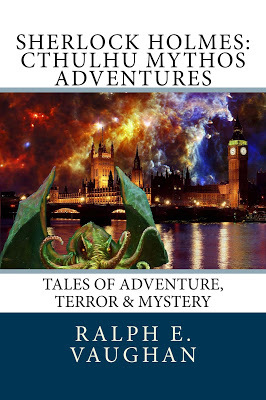 In the two years that have passed since that first Holmes collection, I've written two steampunk novels, four volumes in a continuing series about the Three Dog Detective Agency, and edited a collection of my SF, fantasy, mystery and horror stories from 1970-2000. But I've always wanted to bring back "The Adventure of the Ancient Gods," as well as "The Terror Out of Time," a sort-of Cthulhu Mythos tale teaming Sherlock Holmes with Professor Challenger, Conan Doyle's scientific adventurer, in Edwardian London. That goal has finally been achieved with the publication of
Sherlock Holmes: Cthulhu Mythos Adventures
. In addition to the two stories mentioned, we have "The Whitechapel Terror," in which Holmes is helped by Brigadier General Knight (one of my other series characters) and a most unlikely hero named Sherrington, a sort of Woosteresque chap; "The Woods, The Watcher & The Warding," where Holmes and Watson venture into legend-haunted Hammershire County to come to the aide of Lestrade and a man who may be guilty, but not of what everyone thinks; "The Adventure of the Shattered Men," in which Holmes makes a solo trip to a isolated island in the North Sea to help an old friend who fears the wind; "Lestrade & the Damned Cultists," where the redoubtable Scotland Yard inspector finds himself bedeviled by occult forces, aided only by his own skill as a detective, the dubious assistance of Detective Sergeant Jacket, and come characters met along the road; and "The Whisperer in the Highlands," where a very young Sherlock Holmes comes to the aide of an old Scottish professor of geology (also the narrator of the tale) who is plagued by nightmares and a voice that whispers. In the first collection, Holmes was often off stage or merely an inspirational spirit, but in this new collection Sherlock Holmes plays a key role in every story. Hopefully this will be a treat for both fans of HP Lovecraft and Sherlock Holmes.
In the two years that have passed since that first Holmes collection, I've written two steampunk novels, four volumes in a continuing series about the Three Dog Detective Agency, and edited a collection of my SF, fantasy, mystery and horror stories from 1970-2000. But I've always wanted to bring back "The Adventure of the Ancient Gods," as well as "The Terror Out of Time," a sort-of Cthulhu Mythos tale teaming Sherlock Holmes with Professor Challenger, Conan Doyle's scientific adventurer, in Edwardian London. That goal has finally been achieved with the publication of
Sherlock Holmes: Cthulhu Mythos Adventures
. In addition to the two stories mentioned, we have "The Whitechapel Terror," in which Holmes is helped by Brigadier General Knight (one of my other series characters) and a most unlikely hero named Sherrington, a sort of Woosteresque chap; "The Woods, The Watcher & The Warding," where Holmes and Watson venture into legend-haunted Hammershire County to come to the aide of Lestrade and a man who may be guilty, but not of what everyone thinks; "The Adventure of the Shattered Men," in which Holmes makes a solo trip to a isolated island in the North Sea to help an old friend who fears the wind; "Lestrade & the Damned Cultists," where the redoubtable Scotland Yard inspector finds himself bedeviled by occult forces, aided only by his own skill as a detective, the dubious assistance of Detective Sergeant Jacket, and come characters met along the road; and "The Whisperer in the Highlands," where a very young Sherlock Holmes comes to the aide of an old Scottish professor of geology (also the narrator of the tale) who is plagued by nightmares and a voice that whispers. In the first collection, Holmes was often off stage or merely an inspirational spirit, but in this new collection Sherlock Holmes plays a key role in every story. Hopefully this will be a treat for both fans of HP Lovecraft and Sherlock Holmes.
#mc_embed_signup{background:#fff; clear:left; font:14px Helvetica,Arial,sans-serif; } /* Add your own MailChimp form style overrides in your site stylesheet or in this style block. We recommend moving this block and the preceding CSS link to the HEAD of your HTML file. */ Subscribe to our mailing list Email Address First Name Last Name
 In the two years that have passed since that first Holmes collection, I've written two steampunk novels, four volumes in a continuing series about the Three Dog Detective Agency, and edited a collection of my SF, fantasy, mystery and horror stories from 1970-2000. But I've always wanted to bring back "The Adventure of the Ancient Gods," as well as "The Terror Out of Time," a sort-of Cthulhu Mythos tale teaming Sherlock Holmes with Professor Challenger, Conan Doyle's scientific adventurer, in Edwardian London. That goal has finally been achieved with the publication of
Sherlock Holmes: Cthulhu Mythos Adventures
. In addition to the two stories mentioned, we have "The Whitechapel Terror," in which Holmes is helped by Brigadier General Knight (one of my other series characters) and a most unlikely hero named Sherrington, a sort of Woosteresque chap; "The Woods, The Watcher & The Warding," where Holmes and Watson venture into legend-haunted Hammershire County to come to the aide of Lestrade and a man who may be guilty, but not of what everyone thinks; "The Adventure of the Shattered Men," in which Holmes makes a solo trip to a isolated island in the North Sea to help an old friend who fears the wind; "Lestrade & the Damned Cultists," where the redoubtable Scotland Yard inspector finds himself bedeviled by occult forces, aided only by his own skill as a detective, the dubious assistance of Detective Sergeant Jacket, and come characters met along the road; and "The Whisperer in the Highlands," where a very young Sherlock Holmes comes to the aide of an old Scottish professor of geology (also the narrator of the tale) who is plagued by nightmares and a voice that whispers. In the first collection, Holmes was often off stage or merely an inspirational spirit, but in this new collection Sherlock Holmes plays a key role in every story. Hopefully this will be a treat for both fans of HP Lovecraft and Sherlock Holmes.
In the two years that have passed since that first Holmes collection, I've written two steampunk novels, four volumes in a continuing series about the Three Dog Detective Agency, and edited a collection of my SF, fantasy, mystery and horror stories from 1970-2000. But I've always wanted to bring back "The Adventure of the Ancient Gods," as well as "The Terror Out of Time," a sort-of Cthulhu Mythos tale teaming Sherlock Holmes with Professor Challenger, Conan Doyle's scientific adventurer, in Edwardian London. That goal has finally been achieved with the publication of
Sherlock Holmes: Cthulhu Mythos Adventures
. In addition to the two stories mentioned, we have "The Whitechapel Terror," in which Holmes is helped by Brigadier General Knight (one of my other series characters) and a most unlikely hero named Sherrington, a sort of Woosteresque chap; "The Woods, The Watcher & The Warding," where Holmes and Watson venture into legend-haunted Hammershire County to come to the aide of Lestrade and a man who may be guilty, but not of what everyone thinks; "The Adventure of the Shattered Men," in which Holmes makes a solo trip to a isolated island in the North Sea to help an old friend who fears the wind; "Lestrade & the Damned Cultists," where the redoubtable Scotland Yard inspector finds himself bedeviled by occult forces, aided only by his own skill as a detective, the dubious assistance of Detective Sergeant Jacket, and come characters met along the road; and "The Whisperer in the Highlands," where a very young Sherlock Holmes comes to the aide of an old Scottish professor of geology (also the narrator of the tale) who is plagued by nightmares and a voice that whispers. In the first collection, Holmes was often off stage or merely an inspirational spirit, but in this new collection Sherlock Holmes plays a key role in every story. Hopefully this will be a treat for both fans of HP Lovecraft and Sherlock Holmes.#mc_embed_signup{background:#fff; clear:left; font:14px Helvetica,Arial,sans-serif; } /* Add your own MailChimp form style overrides in your site stylesheet or in this style block. We recommend moving this block and the preceding CSS link to the HEAD of your HTML file. */ Subscribe to our mailing list Email Address First Name Last Name
Published on August 28, 2015 10:42
August 3, 2015
There's Something About Honey
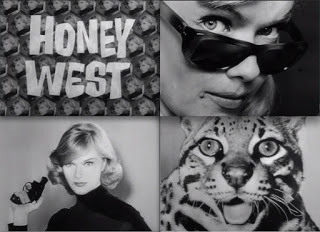 Honey West was one of the first female private eyes to grace the small screen, and she was one of my first celebrity heartthrobs. Looking back, it's difficult to say which made a bigger impression on my young mind, Honey West or the imported Emma Peel of The Avengers. Fortunately, since one is domestic and the other foreign, I can say it's a toss-up, just like I don't have to choose which car was cooler, Honey's Shelby Cobra Convertible or Emma's Lotus Elan. Since they were both black belts in Karate, either one could have been my bodyguard. On the other hand, Honey did have a pet Ocelot, and how cool was that? Honey West did have an advantage with me that Emma Peel did not, in that she was initially a literary character, and for a book person that is always something to consider. Also, Anne Francis, who played Honey West, also had an advantage (with me) that Diana Rigg did not--I was already smitten with her from Forbidden Planet (she almost upstaged Robby), and we shared a birthday...always go with a Virgo.
Honey West was one of the first female private eyes to grace the small screen, and she was one of my first celebrity heartthrobs. Looking back, it's difficult to say which made a bigger impression on my young mind, Honey West or the imported Emma Peel of The Avengers. Fortunately, since one is domestic and the other foreign, I can say it's a toss-up, just like I don't have to choose which car was cooler, Honey's Shelby Cobra Convertible or Emma's Lotus Elan. Since they were both black belts in Karate, either one could have been my bodyguard. On the other hand, Honey did have a pet Ocelot, and how cool was that? Honey West did have an advantage with me that Emma Peel did not, in that she was initially a literary character, and for a book person that is always something to consider. Also, Anne Francis, who played Honey West, also had an advantage (with me) that Diana Rigg did not--I was already smitten with her from Forbidden Planet (she almost upstaged Robby), and we shared a birthday...always go with a Virgo.
 The television version of Honey West started on a second season episode of Burke's Law (another of my favorite mid-Sixties TV shows) entitled "Who Killed the Jackpot." There we met not only Honey, but her man-Friday Sam Bolt (played by John Ericson) and her pet Ocelot, Bruce. Honey must have made an impression with viewers and producers alike because two writers from Burke's Law were told to develop a stand-alone show for Honey, which premiered on ABC in September 1965. It's funny how some things can make an impression far beyond the reality of the situation. Seen through the prism of memory, Honey West had a long run, was a reason to tune in every Friday night at 9 PM, right after The Addams Family (yet another of my favorite mid-Sixties shows). Alas, such was not the case. Honey West endured but a single season, a mere 30 episodes, killed off by two factors--the cold equations of the Nielsen Ratings put it behind Gomer Pyle, USMC (of all things!) and ABC's moguls decided it was cheaper to import The Avengers and run it in the time-slot. (Philistines!) Well, if I couldn't have Honey, at least I could watch Emma karate chop the villains.
The television version of Honey West started on a second season episode of Burke's Law (another of my favorite mid-Sixties TV shows) entitled "Who Killed the Jackpot." There we met not only Honey, but her man-Friday Sam Bolt (played by John Ericson) and her pet Ocelot, Bruce. Honey must have made an impression with viewers and producers alike because two writers from Burke's Law were told to develop a stand-alone show for Honey, which premiered on ABC in September 1965. It's funny how some things can make an impression far beyond the reality of the situation. Seen through the prism of memory, Honey West had a long run, was a reason to tune in every Friday night at 9 PM, right after The Addams Family (yet another of my favorite mid-Sixties shows). Alas, such was not the case. Honey West endured but a single season, a mere 30 episodes, killed off by two factors--the cold equations of the Nielsen Ratings put it behind Gomer Pyle, USMC (of all things!) and ABC's moguls decided it was cheaper to import The Avengers and run it in the time-slot. (Philistines!) Well, if I couldn't have Honey, at least I could watch Emma karate chop the villains.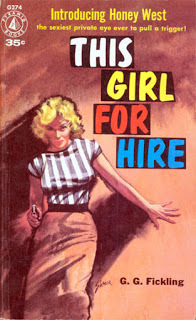 Fortunately, Honey West the literary character had a longer run than her television avatar, beginning in 1957, ending in 1972, at least for novels written by the original authors. I came a bit late to the party, not reading my first Honey West novel until the Eighties, and I started with This Girl for Hire, which was the first novel in the 11-book series. Here's a list, for the collector:
Fortunately, Honey West the literary character had a longer run than her television avatar, beginning in 1957, ending in 1972, at least for novels written by the original authors. I came a bit late to the party, not reading my first Honey West novel until the Eighties, and I started with This Girl for Hire, which was the first novel in the 11-book series. Here's a list, for the collector:This Girl for Hire (1957)Girl on the Loose (1958)A Gun for Honey (1958)Honey in the Flesh (1959)Girl on the Prowl (1959)Kiss for a Killer (1960)Dig a Dead Doll (1960)Blood and Honey (1961)Bombshell (1964)Honey on her Tail (1971)Stiff as a Broad (1972)
I discovered that Honey West of the books was not only tougher than her TV counterpart, but sexier too. Somehow, she always managed to lose her swimsuit top or her blouse or her dress, and yet she always managed to retain her honor and her virtue. She was very much the equivalent of the shining knight of detective fiction, the private eye able to walk the mean streets without becoming mean. In that respect, Honey West reminds me of Philip Marlowe, but she also calls to mind Edgar Rice Burroughs' Martian Princess, Dejah Thoris, who never wore anything but a battle harness and weapons (illustrators are not allowed to get it right) and yet always remained clothed in virtue and righteousness. Pity the poor fool who ever mistook Honey for either an easy frail or a damsel in distress.
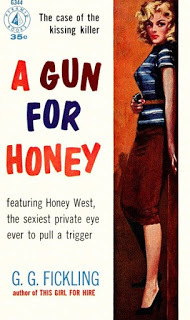
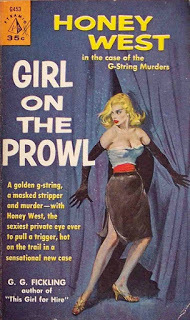
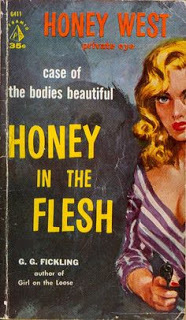
The books were written by Gloria and Forrest (Skip) Fickling. Technically, the byline of GG Fickling is not a pseudonym for they were Gloria's initials and surname, yet it is because they both wrote the books, especially the first two or three. According to Gloria, Skip did most of the writing starting with Honey in the Flesh, with her contributing plots and characters. Those readers coming to the series and expecting to find the television show might be disappointed. No Bruce the Ocelot and no high-tech 007-like gadgetry. There was also no man-Friday Sam Bolt; instead, we have Lt Storm from the Sheriff's Office, who was more antagonist, rival and frustrated rescuer than helpmate. Still, you have Honey, and that is quite enough. The books are well worth the effort to track down, at least the original ones...there are some modern books with the Honey West character brought back, but since I haven't read any, I can't say anything about them. By the way, if you like the mix of murder and breezy humor that was a hallmark of the Honey West books, then you'd probably also enjoy Richard Prather's Shell Scott series of novels, which have a similar approach to crime solving.
Published on August 03, 2015 09:56
July 1, 2015
Will the Real Vulcan Please Stand Up
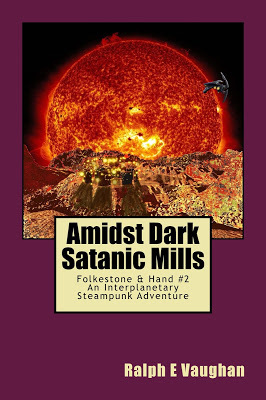 The second book in the interplanetary steampunk
The second book in the interplanetary steampunkadventures of Capt Robert Folkestone and Sgt
Felix Hand is available in print and Kindle editionsA common saying among writers and editors is that it is easier to write a first novel than a second one. When it came to writing my Great American (Steampunk) Novel, however, it was just the opposite. From idea and first words typed to publication, it took about six years for Shadows Against the Empire to come to fruition. Of course, a great deal happened in those six years, including a life-and-death struggle with a work-weasel, innumerable bouts of writers' block, several medical crises, the acquiring and firing of a literary agent, multiple false starts, character and plot changes beyond count, and the abyss of retirement (which is not easy to adjust to after a lifetime of work). Eventually I escaped the razor-sharp teeth of the weasel, banished my inner demons (most of them), came to an uneasy peace with the people in my book, coped with retirement, and wrote the story. In contrast, the second book, Amidst Dark Satanic Mills , took about five months from idea to final draft. Personal crises aside, the main difference in the writing of the two books was that I knew my characters much better than I did on that first outing. Whenever I write a novel, I start with a character sheet on which I have mini-biographies of each person. A biography is great for consistency, such as making sure an eye-patch does not suddenly change eyes in the midst of a story or that a mechanical arm does not become a mechanical leg, but it does not really give you any clues about their personalities. In the first book, the characters grew into their roles through their dialogue, actions and reactions. By the time I reached the end of the first book, my characters were old friends. So, when it came to their second adventure, it was a reunion rather than a first date. They still surprised me from time to time, but even the best of friends can be challenging. There was a complication in writing the story, but it had nothing to do with the characters or the plot. No, it had to do with Star Trek.
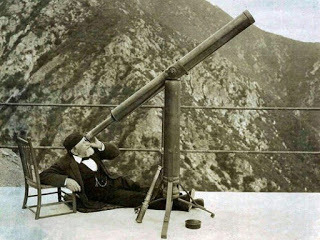 Professor Lewis Swift--Astronomer & Searcher for VulcanWhile the previous book had been set mostly on Mars, Venus and Earth (London & Constantinople), I wanted the second novel to explore a bit more of my Victorian-inspired solar system, so after getting the action started on Mars and Earth (Paris), I expanded it to the Asteroid Belt and Mercury. I also wanted to take the story to a planet that had long fascinated me--Vulcan. No, not that Vulcan, the other Vulcan. What Vulcan would that be, you ask? The planet in our solar system orbiting between the Sun and Mercury. What? You can't find it? Okay, I admit it--it's not there, and maybe never was, but back in the Nineteenth Century many astronomers looked for it and a few claimed to have found it. One of the most prominent astronomers was the American Lewis Swift, whom I included as a character in the story. Professor Swift was supposed to make a cameo appearance, just enough to set Folkestone and Hand on the way to the mysterious secret headquarters of the nefarious MEDUSA organization. Well, that was the plan, but Professor Swift was so enthusiastic about discovering and naming the planet that I could hardly leave him behind on Mercury. The theoretical planet had always been called Vulcan, from the early 1800s on, but say "Vulcan" to anyone now and all they can think of is pointy ears.
Professor Lewis Swift--Astronomer & Searcher for VulcanWhile the previous book had been set mostly on Mars, Venus and Earth (London & Constantinople), I wanted the second novel to explore a bit more of my Victorian-inspired solar system, so after getting the action started on Mars and Earth (Paris), I expanded it to the Asteroid Belt and Mercury. I also wanted to take the story to a planet that had long fascinated me--Vulcan. No, not that Vulcan, the other Vulcan. What Vulcan would that be, you ask? The planet in our solar system orbiting between the Sun and Mercury. What? You can't find it? Okay, I admit it--it's not there, and maybe never was, but back in the Nineteenth Century many astronomers looked for it and a few claimed to have found it. One of the most prominent astronomers was the American Lewis Swift, whom I included as a character in the story. Professor Swift was supposed to make a cameo appearance, just enough to set Folkestone and Hand on the way to the mysterious secret headquarters of the nefarious MEDUSA organization. Well, that was the plan, but Professor Swift was so enthusiastic about discovering and naming the planet that I could hardly leave him behind on Mercury. The theoretical planet had always been called Vulcan, from the early 1800s on, but say "Vulcan" to anyone now and all they can think of is pointy ears.
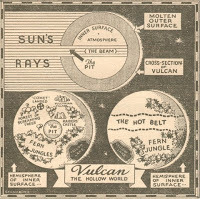 Vulcan from the pulps.
Vulcan from the pulps.
 Thanks a lot, Star Trek! I thought about bowing to tradition and calling the planet in the story Vulcan--let confusion reign! But I did not want the name to overshadow the plot, to, in effect, be a show stopper. Yes, I agonized over the issue. It seems silly to be so overwrought about such a small point, but, hey, that's what writers do best. Then I thought, Well, if Professor Swift wants to come along for the ride, then he can pay his way by providing a subplot which will not only uncomplicate the planet's name, but provide a little humor along the way. As it, turns out, Professor Swift was also known for naming more comets than any other astronomer at the time. In this alternate timeline, he is used to having his way in choosing the names of his comets. He feels he should have the same freedom in choosing the name of his planet, and he is not enamored with the tradition followed by the British Astronomical Society, mandating the use of Roman names for all planetary bodies. He wants to use the Greek equivalent Hephaestus instead. With a little help from Sergeant Hand (that cheeky Martian devil is always up for a bit of mischief) I was able to use the staid Professor Swift as a foil for taking jabs at tradition, officialdom and Star Trek. Having monkeyed with Planet Vulcan, I could not leave the Vulcans untouched. No pointy ears. No cool 60s hairdos. No raised eyebrows, superior smirks or vapid LLAP. Instead we have giant faceless fiery worms who drink lava and manipulate arcane energies. Take that, Star Trek!
Thanks a lot, Star Trek! I thought about bowing to tradition and calling the planet in the story Vulcan--let confusion reign! But I did not want the name to overshadow the plot, to, in effect, be a show stopper. Yes, I agonized over the issue. It seems silly to be so overwrought about such a small point, but, hey, that's what writers do best. Then I thought, Well, if Professor Swift wants to come along for the ride, then he can pay his way by providing a subplot which will not only uncomplicate the planet's name, but provide a little humor along the way. As it, turns out, Professor Swift was also known for naming more comets than any other astronomer at the time. In this alternate timeline, he is used to having his way in choosing the names of his comets. He feels he should have the same freedom in choosing the name of his planet, and he is not enamored with the tradition followed by the British Astronomical Society, mandating the use of Roman names for all planetary bodies. He wants to use the Greek equivalent Hephaestus instead. With a little help from Sergeant Hand (that cheeky Martian devil is always up for a bit of mischief) I was able to use the staid Professor Swift as a foil for taking jabs at tradition, officialdom and Star Trek. Having monkeyed with Planet Vulcan, I could not leave the Vulcans untouched. No pointy ears. No cool 60s hairdos. No raised eyebrows, superior smirks or vapid LLAP. Instead we have giant faceless fiery worms who drink lava and manipulate arcane energies. Take that, Star Trek!
Published on July 01, 2015 20:13
Will the Real Vulcan Please Stand Up...If You Have Legs, That Is
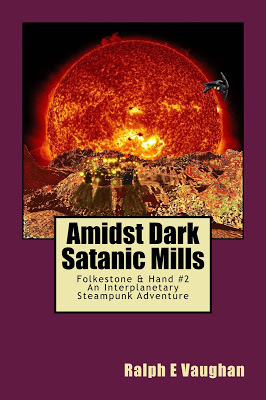 The second book in the interplanetary steampunk
The second book in the interplanetary steampunkadventures of Capt Robert Folkestone and Sgt
Felix Hand is available in print and Kindle editionsA common saying among writers and editors is that it is easier to write a first novel than a second one. When it came to writing my Great American (Steampunk) Novel, however, it was just the opposite. From idea and first words typed to publication, it took about six years for Shadows Against the Empire to come to fruition. Of course, a great deal happened in those six years, including a life-and-death struggle with a work-weasel, innumerable bouts of writers' block, several medical crises, the acquiring and firing of a literary agent, multiple false starts, character and plot changes beyond count, and the abyss of retirement (which is not easy to adjust to after a lifetime of work). Eventually I escaped the razor-sharp teeth of the weasel, banished my inner demons (most of them), came to an uneasy peace with the people in my book, coped with retirement, and wrote the story. In contrast, the second book, Amidst Dark Satanic Mills , took about five months from idea to final draft. Personal crises aside, the main difference in the writing of the two books was that I knew my characters much better than I did on that first outing. Whenever I write a novel, I start with a character sheet on which I have mini-biographies of each person. A biography is great for consistency, such as making sure an eye-patch does not suddenly change eyes in the midst of a story or that a mechanical arm does not become a mechanical leg, but it does not really give you any clues about their personalities. In the first book, the characters grew into their roles through their dialogue, actions and reactions. By the time I reached the end of the first book, my characters were old friends. So, when it came to their second adventure, it was a reunion rather than a first date. They still surprised me from time to time, but even the best of friends can be challenging. There was a complication in writing the story, but it had nothing to do with the characters or the plot. No, it had to do with Star Trek.
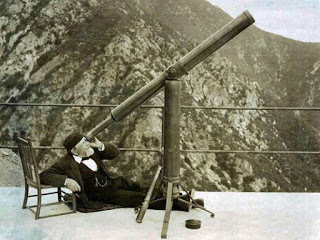 Professor Lewis Swift--Astronomer & Searcher for VulcanWhile the previous book had been set mostly on Mars, Venus and Earth (London & Constantinople), I wanted the second novel to explore a bit more of my Victorian-inspired solar system, so after getting the action started on Mars and Earth (Paris), I expanded it to the Asteroid Belt and Mercury. I also wanted to take the story to a planet that had long fascinated me--Vulcan. No, not that Vulcan, the other Vulcan. What Vulcan would that be, you ask? The planet in our solar system orbiting between the Sun and Mercury. What? You can't find it? Okay, I admit it--it's not there, and maybe never was, but back in the Nineteenth Century many astronomers looked for it and a few claimed to have found it. One of the most prominent astronomers was the American Lewis Swift, whom I included as a character in the story. Professor Swift was supposed to make a cameo appearance, just enough to set Folkestone and Hand on the way to the mysterious secret headquarters of the nefarious MEDUSA organization. Well, that was the plan, but Professor Swift was so enthusiastic about discovering and naming the planet that I could hardly leave him behind on Mercury. The theoretical planet had always been called Vulcan, from the early 1800s on, but say "Vulcan" to anyone now and all they can think of is pointy ears.
Professor Lewis Swift--Astronomer & Searcher for VulcanWhile the previous book had been set mostly on Mars, Venus and Earth (London & Constantinople), I wanted the second novel to explore a bit more of my Victorian-inspired solar system, so after getting the action started on Mars and Earth (Paris), I expanded it to the Asteroid Belt and Mercury. I also wanted to take the story to a planet that had long fascinated me--Vulcan. No, not that Vulcan, the other Vulcan. What Vulcan would that be, you ask? The planet in our solar system orbiting between the Sun and Mercury. What? You can't find it? Okay, I admit it--it's not there, and maybe never was, but back in the Nineteenth Century many astronomers looked for it and a few claimed to have found it. One of the most prominent astronomers was the American Lewis Swift, whom I included as a character in the story. Professor Swift was supposed to make a cameo appearance, just enough to set Folkestone and Hand on the way to the mysterious secret headquarters of the nefarious MEDUSA organization. Well, that was the plan, but Professor Swift was so enthusiastic about discovering and naming the planet that I could hardly leave him behind on Mercury. The theoretical planet had always been called Vulcan, from the early 1800s on, but say "Vulcan" to anyone now and all they can think of is pointy ears.
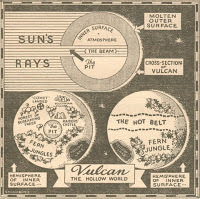 Vulcan from the pulps.
Vulcan from the pulps.
 Thanks a lot, Star Trek! I thought about bowing to tradition and calling the planet in the story Vulcan--let confusion reign! But I did not want the name to overshadow the plot, to, in effect, be a show stopper. Yes, I agonized over the issue. It seems silly to be so overwrought about such a small point, but, hey, that's what writers do best. Then I thought, Well, if Professor Swift wants to come along for the ride, then he can pay his way by providing a subplot which will not only uncomplicate the planet's name, but provide a little humor along the way. As it, turns out, Professor Swift was also known for naming more comets than any other astronomer at the time. In this alternate timeline, he is used to having his way in choosing the names of his comets. He feels he should have the same freedom in choosing the name of his planet, and he is not enamored with the tradition followed by the British Astronomical Society, mandating the use of Roman names for all planetary bodies. He wants to use the Greek equivalent Hephaestus instead. With a little help from Sergeant Hand (that cheeky Martian devil is always up for a bit of mischief) I was able to use the staid Professor Swift as a foil for taking jabs at tradition, officialdom and Star Trek. Having monkeyed with Planet Vulcan, I could not leave the Vulcans untouched. No pointy ears. No cool 60s hairdos. No raised eyebrows, superior smirks or vapid LLAP. Instead we have giant faceless fiery worms who drink lava and manipulate arcane energies. Take that, Star Trek!
Thanks a lot, Star Trek! I thought about bowing to tradition and calling the planet in the story Vulcan--let confusion reign! But I did not want the name to overshadow the plot, to, in effect, be a show stopper. Yes, I agonized over the issue. It seems silly to be so overwrought about such a small point, but, hey, that's what writers do best. Then I thought, Well, if Professor Swift wants to come along for the ride, then he can pay his way by providing a subplot which will not only uncomplicate the planet's name, but provide a little humor along the way. As it, turns out, Professor Swift was also known for naming more comets than any other astronomer at the time. In this alternate timeline, he is used to having his way in choosing the names of his comets. He feels he should have the same freedom in choosing the name of his planet, and he is not enamored with the tradition followed by the British Astronomical Society, mandating the use of Roman names for all planetary bodies. He wants to use the Greek equivalent Hephaestus instead. With a little help from Sergeant Hand (that cheeky Martian devil is always up for a bit of mischief) I was able to use the staid Professor Swift as a foil for taking jabs at tradition, officialdom and Star Trek. Having monkeyed with Planet Vulcan, I could not leave the Vulcans untouched. No pointy ears. No cool 60s hairdos. No raised eyebrows, superior smirks or vapid LLAP. Instead we have giant faceless fiery worms who drink lava and manipulate arcane energies. Take that, Star Trek!
Published on July 01, 2015 20:13
March 22, 2015
Stories Told Around the Campfire
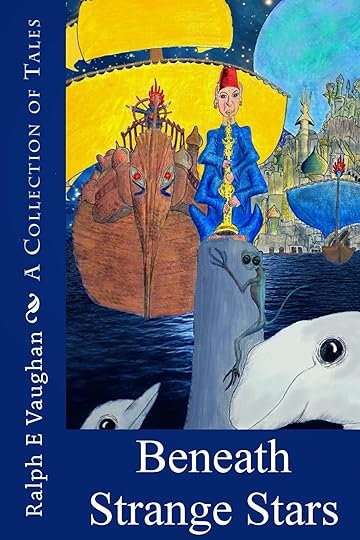 Beneath Strange Stars, a collection of tales from
Beneath Strange Stars, a collection of tales from40+ years of writing, presenting stories in
various genres, in both print & e-book editions
Click the highlighted text for linksRecently I gathered together more than two dozen (out of 300) short stories into a collection titled Beneath Strange Stars: A Collection of Tales. A couple of the stories had their start in the late Sixties and early Seventies, a few of much more recent vintage, but most hailed from the Eighties, Nineties and Naughts, when I went through a creative period where I was finishing a short story, many in various series, every few days. Here is my introduction to that collection:
Concerning Stories Told Around the Campfire
It’s all about the stories.And the characters who live in them.And the readers who live through them.Regardless of cultural conventions and popular sayings, the job of Storyteller has to be at least the third oldest profession. First came the Hunter who tracked and slew Dinner, then the Cook who made Dinner palatable and something to look forward to; then, as the tribe sat around the campfire digesting Dinner, the Storyteller rose and told of spirit animals, great heroes, and beings who danced upon the mountaintops with footfalls of thunder.On the other hand, it may have been the Hunters would not go out until the story of the Great Hunt had been painted upon the cave walls, which would make Storyteller the oldest profession, the Hunter second. And the third oldest profession? That would be the unsuccessful hunter who returned to the cave and chucked a spear into the Storyteller’s chest – the first Critic.Telling stories is somewhat less dangerous these days as we sit around the campfire that is our sun, though, of course, one must still be wary of Critics, dodging the slings and arrows of outrageous reviews. Most writers seek fame and/or fortune but find neither, and almost all fall by the wayside, disappointed or burnt-out. Only two kinds of writers continue to write year after year – those who prosper and achieve a kind of fame, even if only as a frog in a small pond, and those who persevere simply because they cannot stop writing.I am not the first kind of writer.And I’ve not been the first kind of writer for a long time,Some kids played baseball or basketball; I told stories, much to the chagrin of parents and consternation of teachers. Even before I learned to read, which I did at an early age (Uncle Bob was well-intentioned but his reading aloud of comic books left much to be desired), I told stories, which meant convincing other kids that a monster lived under the woodpile, or that a dinosaur had wandered down Seventeenth Street in National City at midnight, or that the Victorian house we all passed twice daily to and from Highland Elementary was haunted.The first story I remember writing, where I made a conscious effort to employ such literary devices as plot, characterization and dialogue was “The Mouse in the Haunted House,” written in first grade, a standard haunted house tale with all the usual weird goings on, but told from the viewpoint of the mouse who dwelt therein.I thought it was a pretty good story. Mrs Hamilton, my teacher, was not so sure, and thus began trips to the school psychologist (all the rage in the Fifties for the misunderstood youth of America). Well, I did call her “Horrible Hamilton,” so, looking back, maybe I would have ended up in that office anyway.
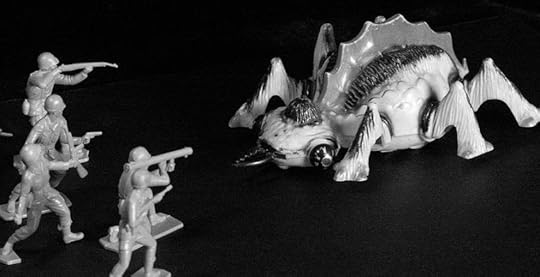 Valiant Defenders Fighting Horrible Hamilton
Valiant Defenders Fighting Horrible HamiltonAKA me in First Grade My next foray into fiction, a much more serious attempt, was a couple of years later, as part of a class assignment. Mrs Decker (we had no pejorative terms for her because she was a wonderful teacher) showed a series of photographs and asked us to choose one and write a short story.The photo that impressed me was of a pure white bird with bright red eyes. As soon as I saw it, the plot for a story flashed into my mind, and the result was “The White Raven.” Yes, ravens are black, I know it now just as I did then, but the story was about a white raven, and the plot not only revealed why he was white and had red eyes, but also explained that shadowy building seen in the background – yes, another haunted house.Mrs Hamilton would have sent me to the school shrink, or sent a note home to my mother, or both, but Mrs Decker was a much more perspicacious person. She entered the short story into a district writing contest and it won first prize.Using photos and art as sources of inspiration is a technique I’ve turned to many times in the six decades since I saw “The White Raven,” either photographs and paintings by others, or drawings of my own. I often sketch characters and scenes and keep them near me while I write. In high school, this visual technique was adopted by Mr Phil Ligon, my journalism, photography and creative writing teacher, and we used Pictures for Writing by David A. Sohn as an unofficial textbook.

During high school, also, I wrote a story called “On the Moor,” about a publisher motoring through the misty wilds of Scotlandwho comes to a bad end. The story is not important (and it’s probably a good thing that it is mostly lost) except in that it started a chain of events that affects me even now. I had typed it on my Remington Quietwriter and was reading it in homeroom class one day. Mr Robert Vigil noticed I was not frantically trying to finish homework assignments from the day before (yes, I was one of those students) and he asked to read what I had written.I was hesitant. I am at heart very shy, a trait most writers seek to overcome. A few years ago, I attended a social gathering at the San Diego Public Library for local authors. It was very crowded and you could not go anywhere without bumping into either an author or his ego. A few were my age or older, but most were younger, adept at networking and socializing, both on- and off-line. The way they aggressively worked the room, trying to hustle copies of their own books and forge relationships, you would have thought the room was filled with editors and publishers rather than desperate writers.My experience is that most writers are extroverts, and those who are not Big Names are often driven by a kind of desperation that will make them buttonhole and glad-hand any possibly useful stranger not fast enough to get away. When I attended the World Fantasy Convention in Tucson(1991), I had the great pleasure of seeing the room worked by a master of the art, my friend, the late t. Winter-Damon, with whom I worked on a few projects. No editor, publisher or writer could escape him. When I remarked on his outgoing nature to his wife, Diane, she laughed and said: “Yeah, Tim can work a room like a two-dollar hooker at a Shriner’s convention. You can bet he’s going to end up with at least a half-dozen contracts.” It’s an enviable skill. But I digress. At the time Mr Vigil asked to see the story, my private writing was still a private matter. But he was a pleasant person and asked nicely, and I did not feel he would ridicule me, which is every young teen’s second greatest fear. So I let him read it. When he saw me the next day, he handed the story back, said he had liked it very much, and asked me, “Have you ever heard of a writer named H.P. Lovecraft?”I had not, but I soon would, and that long-dead fantasy writer would eventually loom large in my life and writing. Through high school and college, and on into adulthood, I read and re-read Lovecraft’s stories, eventually branching out to the other writers of his era, as well as modern writers also under his spell.About that time Mr Vigil asked to see “On the Moor,” I was encouraged to apply to the local paper, the Chula VistaStar-News, as a book reviewer. Publisher Lowell Blankfort was looking for a hip student’s point of view at a time when the counter-culture was in full swing, but what he got instead was me. I sent him some sample reviews, he liked what he read, and I was hired. Well, “hired” is a relative term since there was no pay, but I did get to keep the books.Publication in the Star-Newsbrought a kind of notoriety, and people who had overlooked me started to notice I was alive. But I kept writing the reviews anyway. Back in those days, newspapers were still very big, especially community newspapers like the Star-News. Everyone in Chula Vista subscribed, if only to keep up to date with high school sports. The Star-News (founded 1882) is still around, but, sadly, time has not been kinder to it than any other local paper, though it manages to maintain a kind of faded glory. Because of my book reviews, I was asked to work on the Trojan Trumpet, the school newspaper, which led to formal journalism training, photography and creative writing. All those activities taught me about writing, but even more about publishing. I started submitting stories to science fiction and mystery magazines I had been reading for years, but not with much success, though I was able to place articles and poems with smaller journals. There were more than four dozen major digest magazines publishing science fiction, fantasy, mystery, horror and detective stories, and many dozens more little and literary magazines. Of course, that was then, for now there are three science fiction magazines and two mystery magazines, and even they are not what they once were.Even in the waning years of fiction (I didn’t know it then, but I do now) I published regularly, even though mostly in magazines familiar to just a handful of people. While publications like The Writer, Writers’ Digest and Writers’ Marketplace played a big role in submissions, smaller publications like File 550, the Gila Queen’s Guide to Markets, and, most especially, Scavenger’s Newsletter played an even bigger role.

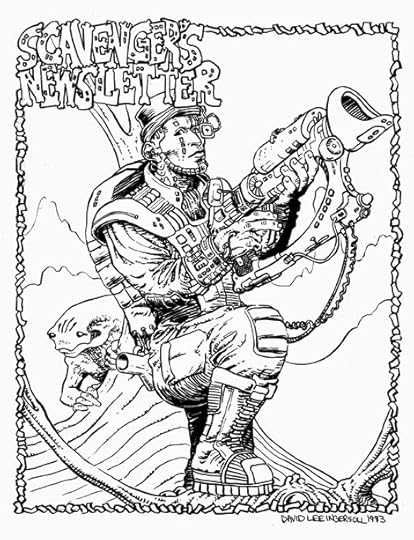
Scavenger’s Newsletter was founded, published and edited by Janet Fox (1940 – 2009) a wonderful writer of fantasy and horror who also excelled as a teacher and poet. Though we never actually met, I almost feel as if I had known her.If it had not been for Janet dutifully publishing market lists month after month, many of the stories in this book might never have been published. As with other aspects of the writer’s life, the marketzine has been overtaken by the digital age, and though such lists come at us now with the speed of electrons rather than the pace of a trudging mailman, it’s just not the same.Because of the influence of Lovecraft, I wrote lots of Cthulhu Mythos stories, some slavishly chained to Lovecraft’s archaic and formal style, others in my own developing voice. The Mythos story that finally made a splash was actually a hybrid tale, “The Adventure of the Ancient Gods,” which appeared in a fanzine called Holmesian Federation. Other tales mixed Sherlock Holmes with Star Trek, but mine brought Holmes into contact with Lovecraft’s alien gods. Since the background of that story has been explained in other venues (Sherlock Holmes: The Coils of Time & Other Stories and Sherlock Holmes: Cthulhu Mythos Adventures), I won’t go into it or its sequels here. One outcome of the story and its sequels was that I was profiled in “Ralph E. Vaughan: Visionary of the Dreamlands,” written for Shoggoth by t. Winter-Damon.
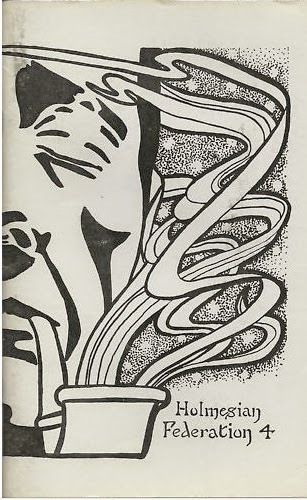 Where HP Lovecraft of Providence
Where HP Lovecraft of Providencefirst met Mr Sherlock Holmes of 221b Baker Street, London
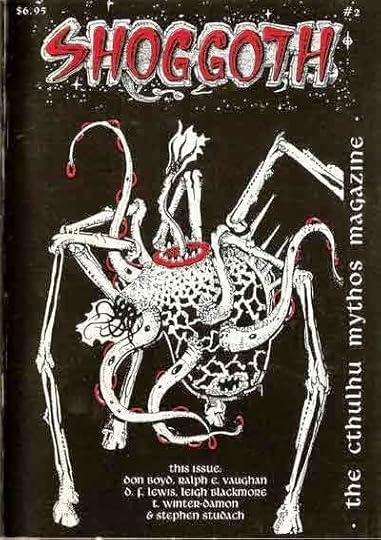 My friend t. winter-damon actually made me seem
My friend t. winter-damon actually made me seeminteresting in his interview of me and review of "The
Dreaming Detective."
It is often harder to sell a second story to an editor than the first, but usually easier to sell the third, even though in the small press world “sell” does not always equal money, and finding a little magazine that actually makes it to the third issue can be difficult. The profile in Shoggoth was a huge ego-boost, but it also caused some editors to look at my stories a little differently when they sailed over the transom. It was never easy submitting a story, but in some cases it became not as difficult.Just as my drawings revolve around themes and archetypical characters, so do my short stories. In themes, we have alienation, alternate history, ancient cultures, religion, fear, corruption and the feeling of being lost. For my characters, I created Mitsuko, a young woman running from a warlord in an alternate Japan; Kira, a bronze-clad warrior living at the end of the Bronze Age; Tawa of the Sky Clan, a paleo-Indian maiden taken from her home by raiders; and a bevy of loners dwelling on a dead Earth at the end of time.Before you head off into the stories, let me tell you a tale about Kira, who was my favorite. I started writing about her back in the early 80’s, a tall, muscular woman clad in black leather and bronze armor, a follower of the Triple Goddess, a holder-on to old ways even as the world changed around her, bronze giving way to the new metal iron. Her world was based solidly in the Bronze Age, but was also touched by magick and the gods. With her, I traveled to the edge of the known world and beyond, to America, Australia, Africa, the Orient, the vast necropolis of Nordhelm, and even to the far future. She was a popular character, and I drew many drawings of her in leather skirt and armor based on Mycenaean designs, with her boots and her weapons historically accurate. I thought we would be together for a very long time, for I had written a score of stories and had ideas for many more, including several novels.Then Kira went away.I had suspected the end was coming, for I had seen signs, but it was still shocking when it finally happened. Editors began rejecting the stories. Finally, I received a note from an editor with whom I had never worked, and I knew the end was at hand: Dear Mr Von: Not a bad story but you cando better than copy Xena: Warrior Princess,can’t you?
 I was annoyed at the way Xena knocked my Kira series for a loop,
I was annoyed at the way Xena knocked my Kira series for a loop,but I got over it...and, no, I did not sue. Seriously?
I did not submit any further Kira stories after that. Kira could prevail against any foe, human or supernatural, but not against the power of television.
******************
The only thing to add to what's written above is that shortly after I posted a link to the e-book edition on my high school class' Facebook page, one of my former classmates provided me with Mr Vigil's phone number. Shortly afterwards, the Wife and I had a nice, long visit with him. His house is filled with books, as is fitting for a man who has loved literature and reading all his life (it's my excuse too), but I am glad his house had room for one more book, the autographed copy I gave him. I think he was please to see it and very surprised that he had had such a great affect upon my writing life, especially since he only had me for homeroom. I think all teachers hope to have a positive effect on their students' lives, but, quite often, they never know exactly what the effect was or how significant it turned out to be, for time severs us from those we knew in our youth, and seeds planted sometimes require years to bloom. I'm extremely grateful I had the chance to let Mr Vigil know his efforts had not been in vain; I regret, however, that I was not able to tell Mr Ligon the same thing, for he passed away some years ago.
Published on March 22, 2015 14:16
February 21, 2015
The Rise and Fall of Dream Quest Books
Back more years ago than I care to remember, certainly beyond last week which itself is hard enough to recall these days, I left the U.S. Army and returned to Chula Vista after a six year absence. At that time, we had one child (born while we were in Germany), thirty was an age still in my future, and I had hopes of finding employment as a photojournalist, which was what I had been in the Army. I did not realize then that we would be blessed unexpectedly with a second child (my daughter is now much older than I was then), that thirty would become an age dimly remembered (along with dinosaurs and pyramids), and that America had entered a period when networking would triumph over experience ("Used to be I would have hired you in an instant," one of the editors at the San Diego Union-Tribune told me, "but now we get all the unpaid interns we want, and we keep the ones we like."). But it does no good to pine for what might might have been, to mope over what did or did not come to pass. We cherish our children, I learned to age gracefully (more or less), and I value a retirement that now allows me the luxury of writing full time. As you get older, though, and the view ahead becomes shorter, it's natural to look back over the longer past trailing behind. When I find myself in a reflective and nostalgic mood, I often think of Dream Quest Books, of tumbling through the door, of the narrow aisles and Tam behind the counter...of the rise and fall of Dream Quest Books.
 I have all my life loved bookstores. No matter where I was, I always sought out the nearest bookstore. Whenever a phone book came into my possession, my first task was to look up all the bookstores, jotting down their addresses and phone numbers. Of late, naturally, doing so has become an exercise in futility and frustration, so few are they in number. But such was not the case in the 1970s in San Diego. Although bookstores had already started to vanish from the landscape by then, they were still plentiful. Even Chula Vista, then with a population of less than 50,000 souls had two new bookstores, three used bookstores, a newsstand, several department stores with book sections, and numerous thrift shops that advertised their extensive book collections. San Diego proper had more than thirty bookstores downtown and even more in the neighborhoods, all of varying size and fare, from closet-sized specialty shops (the best magazines came from a place so small two people could not simultaneously look at the same shelf) to multi-floor emporiums. I visited them all, as time and finances allowed, and I was always on the look-out for some bookstore new to me. I did not find Dream Quest Books on my own, however...for that I have to give credit to my mother. She never really did understand my fascination with books and bookstores, but she was an enabler nonetheless, and it was she who one day said, "Hey, I found a bookstore listed in the newspaper...Dream Quest Books. Ever hear of it?" She thought I might be having a heart attack, but I was just responding to the name.
I have all my life loved bookstores. No matter where I was, I always sought out the nearest bookstore. Whenever a phone book came into my possession, my first task was to look up all the bookstores, jotting down their addresses and phone numbers. Of late, naturally, doing so has become an exercise in futility and frustration, so few are they in number. But such was not the case in the 1970s in San Diego. Although bookstores had already started to vanish from the landscape by then, they were still plentiful. Even Chula Vista, then with a population of less than 50,000 souls had two new bookstores, three used bookstores, a newsstand, several department stores with book sections, and numerous thrift shops that advertised their extensive book collections. San Diego proper had more than thirty bookstores downtown and even more in the neighborhoods, all of varying size and fare, from closet-sized specialty shops (the best magazines came from a place so small two people could not simultaneously look at the same shelf) to multi-floor emporiums. I visited them all, as time and finances allowed, and I was always on the look-out for some bookstore new to me. I did not find Dream Quest Books on my own, however...for that I have to give credit to my mother. She never really did understand my fascination with books and bookstores, but she was an enabler nonetheless, and it was she who one day said, "Hey, I found a bookstore listed in the newspaper...Dream Quest Books. Ever hear of it?" She thought I might be having a heart attack, but I was just responding to the name.
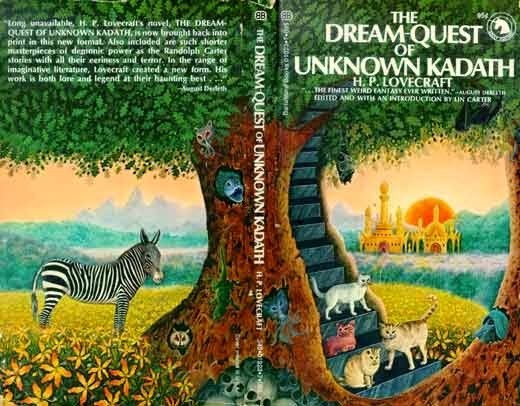 Prior to leaving high school for the cruel world of adulthood, I was introduced to the writing of H.P. Lovecraft by one of my teachers. It was a discovery that permanently changed both my reading habits and my aspirations of becoming a published writer. Among the tales written by the Young Gentleman from Providence was a long fantasy story entitled The Dream-Quest of Unknown Kadath, the record of a man named Randolph Carter who forever quested for a lovely sunset city seen in his dreams. It was one of my favorites, and remains so to this day, and the Dreamlands imagined by Lovecraft became the basis of three of my own stories: The Dreaming Detective, The Adventure of the Laughing Moon-beast, and Professor Challenger in The Secrets of the Dreamlands. My discovery of Lovecraft was at the time less than a decade in my past, so I was not only still greatly influenced by him, but I was filled with the boundless (and often mindless) enthusiasm possessed only by the young. With a name like Dream Quest Books, I had high hopes of finding a bookstore that was as wonderful and as magical as Randolph Carter's twilight metropolis.
Prior to leaving high school for the cruel world of adulthood, I was introduced to the writing of H.P. Lovecraft by one of my teachers. It was a discovery that permanently changed both my reading habits and my aspirations of becoming a published writer. Among the tales written by the Young Gentleman from Providence was a long fantasy story entitled The Dream-Quest of Unknown Kadath, the record of a man named Randolph Carter who forever quested for a lovely sunset city seen in his dreams. It was one of my favorites, and remains so to this day, and the Dreamlands imagined by Lovecraft became the basis of three of my own stories: The Dreaming Detective, The Adventure of the Laughing Moon-beast, and Professor Challenger in The Secrets of the Dreamlands. My discovery of Lovecraft was at the time less than a decade in my past, so I was not only still greatly influenced by him, but I was filled with the boundless (and often mindless) enthusiasm possessed only by the young. With a name like Dream Quest Books, I had high hopes of finding a bookstore that was as wonderful and as magical as Randolph Carter's twilight metropolis.
Those high hopes rather sank when I pulled to the curb at the address on University Avenue. It was a tiny establishment, part of a long, blockish building, split from the next long blockish building by a dismal trash-strewn reefer-reeking alley lined with dilapidated apartment buildings and carports in various stages of decay. The format of the building was dirty window/door, dirty window/door, dirty window/door, each door leading into a room of no real depth with a smaller back area that business owners could use for storage, crap games or to sell drugs. The businesses tended toward smoke shops, dry cleaners, second hand clothes and tattoo parlors. And there in the midst of it was the shop I sought, with a clean window and a curving line of antique lettering that read: DREAM QUEST BOOKS. Hoping for the best, I made my way past sprawled street people and ambulating hookers and gang-bangers, opened the door, and tumbled into a dimly lit bookcase-filled room

Yes, I tumbled, for I did not realize that there was a slight step-down after going through the door, So the first words that passed between me and bookstore owner Tam Schacht were her asking "Are you okay? Did you hurt yourself?" and me muttering "Uh, yeah, I'm fine. Ouch." By any standards, it was not an auspicious beginning, certainly not an opening guaranteed to lead to a friendship that would last half a decade, until...well, more about that later. Tam Schacht was a lovely Asian girl, a few years younger than me, who loved books and whose ambition for as long as she could remember was to own a bookstore, a dream she fulfilled by floating a huge loan and installing her massive collection of books in this hovel of a store on a stretch of road that could have been labeled "Avenue of Broken Dreams." While not the genteel establishment in the nice part of town she might have yearned for, it was, as she rightly pointed out, "a start."
I told her what had brought me out of Chula Vista and she gave me the guided tour, which did not take long. Although she had worked miracles to put as many bookcases as possible into a small space, enough to make me think perhaps her shop was a little like a T.A.R.D.I.S.--bigger on the inside--it was, by anyone's standards, cramped. As the name of the store implied, she did stock a lot of Lovecraft-related books, including several from Arkham House, but all the books were either science fiction or fantasy...no westerns, romances, mysteries or any other genre. Such a specialized trade can work well in the right venue, but it can also lead to an epic fail, something that Tam thought of every single day. While business was not spectacular--she had then been open a few months--she got enough trade in through the door to meet the repayments of the loan, pay her rent and put food on the table. I helped her that day by spending almost twenty dollars...not a huge amount, but back then equal to more than what $230 would be now. I could ill afford it, but there were so many wonderful things in that tiny store.
I became a frequent visitor at the bookstore, at least once every two weeks, and whenever I stopped by, I always bought books. The same could not be said for all the people who wandered in through the door. When in the store, I was always either browsing or chatting with Tam about books, authors or writing, all productive pursuits. And she did like chatting with me, not just because I was knowledgeable about her field of endeavor, but because I was a writer, even though back in those days I was just starting out and was even more unknown then than I am now. She, too, was an aspiring writer and poet, and when I published my first small press chapbook, Lost Lands, in 1982, it contained five untitled haiku poems by Tam, as well as her poems "Cretan Bulls," "Mayan Nightfall," "Egyptian Ways," and "Rainfall."
 I've published lots of small press books since then, but Lost Lands remains my favorite, with its wonderful wraparound cover and interior illustrations by artist Nick Petrosino, and poems from some of the great genre poets of the early 80s. It was, I think, the only chapbook from Running Dinosaur Press, as I named by "publishing house" that was carried in a real bookstore, but, then, Tam had something of a vested interest, didn't she? Back in those days, print was still king. No internet, no email, no on-line stores, no Kindles or Nooks, no worldwide book searches. At the time, word processors were just then coming out, and we spent much time arguing the virtues of the devices...in case you're interested, the overwhelming consensus was that word processors were a passing fad and that nothing would ever replace typewriters and carbon paper. Even in the late 70s, as magazines began to vanish and recreational reading started to wane, none of us could see doom which would eventually overtake the world of the printed book. And, by the way, Lost Lands, like all my other books, was a physical paste-up, created with a typewriter and press-letters, printed at the local copy-shop and assembled at the kitchen table. But I digress.
I've published lots of small press books since then, but Lost Lands remains my favorite, with its wonderful wraparound cover and interior illustrations by artist Nick Petrosino, and poems from some of the great genre poets of the early 80s. It was, I think, the only chapbook from Running Dinosaur Press, as I named by "publishing house" that was carried in a real bookstore, but, then, Tam had something of a vested interest, didn't she? Back in those days, print was still king. No internet, no email, no on-line stores, no Kindles or Nooks, no worldwide book searches. At the time, word processors were just then coming out, and we spent much time arguing the virtues of the devices...in case you're interested, the overwhelming consensus was that word processors were a passing fad and that nothing would ever replace typewriters and carbon paper. Even in the late 70s, as magazines began to vanish and recreational reading started to wane, none of us could see doom which would eventually overtake the world of the printed book. And, by the way, Lost Lands, like all my other books, was a physical paste-up, created with a typewriter and press-letters, printed at the local copy-shop and assembled at the kitchen table. But I digress.
As I mentioned, whenever I went to Dream Quest Books I made an effort to be a good customer or at least entertaining to Tam and the others in the store. The same, however, could not be said about some of the others who wandered in. Tam was very vivacious and gregarious, attended science fiction conventions regularly, and was very active in local fandom, especially S.T.A.R...Star Trek Association for Revival, one of the many sci-fi fan groups in San Diego. She had dozens of friends, and while a few were good customers, most of them seemed to think their friendship with Tam gave them license to sit in the aisles with stacks of books they were reading (rather than buying), to argue loudly with each other about Star Wars vs Star Trek, or run their Dungeons & Dragons quests in any vacant space. They were loud and obnoxious, intensely narcissistic and tended to drive away customers who came in to browse and buy. Tam should have given them the old heave-ho, or at least laid down the law about lounging around and keeping books out of the hands of real customers, but they were her friends. Wanting to keep them as her friends made her overlook their excesses and egregious behavior.
Although Tam had started out small, it had always been her goal to relocate her bookstore into a larger building and in a better neighborhood, one in which street people would not pee on the wall, hookers would not leer at her customers, and where drug busts and shootings were not everyday occurrences. As soon as her second year-long lease was up, she managed to make a move to a two-story house near San Diego State. The difference between the two locales was tremendous. People who came to the new shop no longer had to step over sidewalk drunks, turn down solicitations from haggy hookers, or worry that their cars might be broken into by wild-eyed drug fiends...yes, college and university students were much different back then. For awhile, Tam did indeed see a tremendous increase in her business, as Dream Quest Books became quite a popular destination for the progressive intelligentsia who frequented the area. The fly in the ointment, however, were Tam's fannish friends, for they relocated as well. If anything, the situation worsened---nature abhors a vacuum, and evidently so do fanboys (and girls). Her loutish friends spread out to fill the space available, bringing their arguments, games and stacks of books. In a very short time, customers who came in wondered whether this was a professional business or a frat party with books. After hanging on for three years, each year leaner than the last as the fan-friends multiplied and the paying customers decreased, Tam bowed to the immutable laws of economics. She packed up her books and locked the doors for the last time.
It's been more than three decades since I first stumbled into Dream Quest Books, but sometimes it seems only yesterday. I recall the books I bought there, the spirited chats I had with Tam, the dreams all of us had about becoming famous science fiction writers, and our hopes and fears about the future. I suppose I am at my most nostalgic when I think about how bookstores have declined since then, and I tell myself that if Dream Quest Books had not closed then, it surely would have done so before the turn of the century. Now, Chula Vista has no bookstores, and of the thirty or so that were in downtown San Diego, none remain; the sixty or so bookstores that existed in the various neighborhoods can now be counted on two hands, with some fingers left over, and even they tend to do more business on the internet than with walk-in browsers. So, what's the point of this story? Perhaps it's a cautionary tale for anyone wanting to run a business. But, mostly, I just wanted to let people know there was once a bookstore in San Diego called Dream Quest Books and that for too-short a lustrum it was a place of wonder, gone forever, but still there when I quest in my dreams.
 I have all my life loved bookstores. No matter where I was, I always sought out the nearest bookstore. Whenever a phone book came into my possession, my first task was to look up all the bookstores, jotting down their addresses and phone numbers. Of late, naturally, doing so has become an exercise in futility and frustration, so few are they in number. But such was not the case in the 1970s in San Diego. Although bookstores had already started to vanish from the landscape by then, they were still plentiful. Even Chula Vista, then with a population of less than 50,000 souls had two new bookstores, three used bookstores, a newsstand, several department stores with book sections, and numerous thrift shops that advertised their extensive book collections. San Diego proper had more than thirty bookstores downtown and even more in the neighborhoods, all of varying size and fare, from closet-sized specialty shops (the best magazines came from a place so small two people could not simultaneously look at the same shelf) to multi-floor emporiums. I visited them all, as time and finances allowed, and I was always on the look-out for some bookstore new to me. I did not find Dream Quest Books on my own, however...for that I have to give credit to my mother. She never really did understand my fascination with books and bookstores, but she was an enabler nonetheless, and it was she who one day said, "Hey, I found a bookstore listed in the newspaper...Dream Quest Books. Ever hear of it?" She thought I might be having a heart attack, but I was just responding to the name.
I have all my life loved bookstores. No matter where I was, I always sought out the nearest bookstore. Whenever a phone book came into my possession, my first task was to look up all the bookstores, jotting down their addresses and phone numbers. Of late, naturally, doing so has become an exercise in futility and frustration, so few are they in number. But such was not the case in the 1970s in San Diego. Although bookstores had already started to vanish from the landscape by then, they were still plentiful. Even Chula Vista, then with a population of less than 50,000 souls had two new bookstores, three used bookstores, a newsstand, several department stores with book sections, and numerous thrift shops that advertised their extensive book collections. San Diego proper had more than thirty bookstores downtown and even more in the neighborhoods, all of varying size and fare, from closet-sized specialty shops (the best magazines came from a place so small two people could not simultaneously look at the same shelf) to multi-floor emporiums. I visited them all, as time and finances allowed, and I was always on the look-out for some bookstore new to me. I did not find Dream Quest Books on my own, however...for that I have to give credit to my mother. She never really did understand my fascination with books and bookstores, but she was an enabler nonetheless, and it was she who one day said, "Hey, I found a bookstore listed in the newspaper...Dream Quest Books. Ever hear of it?" She thought I might be having a heart attack, but I was just responding to the name. Prior to leaving high school for the cruel world of adulthood, I was introduced to the writing of H.P. Lovecraft by one of my teachers. It was a discovery that permanently changed both my reading habits and my aspirations of becoming a published writer. Among the tales written by the Young Gentleman from Providence was a long fantasy story entitled The Dream-Quest of Unknown Kadath, the record of a man named Randolph Carter who forever quested for a lovely sunset city seen in his dreams. It was one of my favorites, and remains so to this day, and the Dreamlands imagined by Lovecraft became the basis of three of my own stories: The Dreaming Detective, The Adventure of the Laughing Moon-beast, and Professor Challenger in The Secrets of the Dreamlands. My discovery of Lovecraft was at the time less than a decade in my past, so I was not only still greatly influenced by him, but I was filled with the boundless (and often mindless) enthusiasm possessed only by the young. With a name like Dream Quest Books, I had high hopes of finding a bookstore that was as wonderful and as magical as Randolph Carter's twilight metropolis.
Prior to leaving high school for the cruel world of adulthood, I was introduced to the writing of H.P. Lovecraft by one of my teachers. It was a discovery that permanently changed both my reading habits and my aspirations of becoming a published writer. Among the tales written by the Young Gentleman from Providence was a long fantasy story entitled The Dream-Quest of Unknown Kadath, the record of a man named Randolph Carter who forever quested for a lovely sunset city seen in his dreams. It was one of my favorites, and remains so to this day, and the Dreamlands imagined by Lovecraft became the basis of three of my own stories: The Dreaming Detective, The Adventure of the Laughing Moon-beast, and Professor Challenger in The Secrets of the Dreamlands. My discovery of Lovecraft was at the time less than a decade in my past, so I was not only still greatly influenced by him, but I was filled with the boundless (and often mindless) enthusiasm possessed only by the young. With a name like Dream Quest Books, I had high hopes of finding a bookstore that was as wonderful and as magical as Randolph Carter's twilight metropolis.Those high hopes rather sank when I pulled to the curb at the address on University Avenue. It was a tiny establishment, part of a long, blockish building, split from the next long blockish building by a dismal trash-strewn reefer-reeking alley lined with dilapidated apartment buildings and carports in various stages of decay. The format of the building was dirty window/door, dirty window/door, dirty window/door, each door leading into a room of no real depth with a smaller back area that business owners could use for storage, crap games or to sell drugs. The businesses tended toward smoke shops, dry cleaners, second hand clothes and tattoo parlors. And there in the midst of it was the shop I sought, with a clean window and a curving line of antique lettering that read: DREAM QUEST BOOKS. Hoping for the best, I made my way past sprawled street people and ambulating hookers and gang-bangers, opened the door, and tumbled into a dimly lit bookcase-filled room

Yes, I tumbled, for I did not realize that there was a slight step-down after going through the door, So the first words that passed between me and bookstore owner Tam Schacht were her asking "Are you okay? Did you hurt yourself?" and me muttering "Uh, yeah, I'm fine. Ouch." By any standards, it was not an auspicious beginning, certainly not an opening guaranteed to lead to a friendship that would last half a decade, until...well, more about that later. Tam Schacht was a lovely Asian girl, a few years younger than me, who loved books and whose ambition for as long as she could remember was to own a bookstore, a dream she fulfilled by floating a huge loan and installing her massive collection of books in this hovel of a store on a stretch of road that could have been labeled "Avenue of Broken Dreams." While not the genteel establishment in the nice part of town she might have yearned for, it was, as she rightly pointed out, "a start."
I told her what had brought me out of Chula Vista and she gave me the guided tour, which did not take long. Although she had worked miracles to put as many bookcases as possible into a small space, enough to make me think perhaps her shop was a little like a T.A.R.D.I.S.--bigger on the inside--it was, by anyone's standards, cramped. As the name of the store implied, she did stock a lot of Lovecraft-related books, including several from Arkham House, but all the books were either science fiction or fantasy...no westerns, romances, mysteries or any other genre. Such a specialized trade can work well in the right venue, but it can also lead to an epic fail, something that Tam thought of every single day. While business was not spectacular--she had then been open a few months--she got enough trade in through the door to meet the repayments of the loan, pay her rent and put food on the table. I helped her that day by spending almost twenty dollars...not a huge amount, but back then equal to more than what $230 would be now. I could ill afford it, but there were so many wonderful things in that tiny store.
I became a frequent visitor at the bookstore, at least once every two weeks, and whenever I stopped by, I always bought books. The same could not be said for all the people who wandered in through the door. When in the store, I was always either browsing or chatting with Tam about books, authors or writing, all productive pursuits. And she did like chatting with me, not just because I was knowledgeable about her field of endeavor, but because I was a writer, even though back in those days I was just starting out and was even more unknown then than I am now. She, too, was an aspiring writer and poet, and when I published my first small press chapbook, Lost Lands, in 1982, it contained five untitled haiku poems by Tam, as well as her poems "Cretan Bulls," "Mayan Nightfall," "Egyptian Ways," and "Rainfall."
 I've published lots of small press books since then, but Lost Lands remains my favorite, with its wonderful wraparound cover and interior illustrations by artist Nick Petrosino, and poems from some of the great genre poets of the early 80s. It was, I think, the only chapbook from Running Dinosaur Press, as I named by "publishing house" that was carried in a real bookstore, but, then, Tam had something of a vested interest, didn't she? Back in those days, print was still king. No internet, no email, no on-line stores, no Kindles or Nooks, no worldwide book searches. At the time, word processors were just then coming out, and we spent much time arguing the virtues of the devices...in case you're interested, the overwhelming consensus was that word processors were a passing fad and that nothing would ever replace typewriters and carbon paper. Even in the late 70s, as magazines began to vanish and recreational reading started to wane, none of us could see doom which would eventually overtake the world of the printed book. And, by the way, Lost Lands, like all my other books, was a physical paste-up, created with a typewriter and press-letters, printed at the local copy-shop and assembled at the kitchen table. But I digress.
I've published lots of small press books since then, but Lost Lands remains my favorite, with its wonderful wraparound cover and interior illustrations by artist Nick Petrosino, and poems from some of the great genre poets of the early 80s. It was, I think, the only chapbook from Running Dinosaur Press, as I named by "publishing house" that was carried in a real bookstore, but, then, Tam had something of a vested interest, didn't she? Back in those days, print was still king. No internet, no email, no on-line stores, no Kindles or Nooks, no worldwide book searches. At the time, word processors were just then coming out, and we spent much time arguing the virtues of the devices...in case you're interested, the overwhelming consensus was that word processors were a passing fad and that nothing would ever replace typewriters and carbon paper. Even in the late 70s, as magazines began to vanish and recreational reading started to wane, none of us could see doom which would eventually overtake the world of the printed book. And, by the way, Lost Lands, like all my other books, was a physical paste-up, created with a typewriter and press-letters, printed at the local copy-shop and assembled at the kitchen table. But I digress.As I mentioned, whenever I went to Dream Quest Books I made an effort to be a good customer or at least entertaining to Tam and the others in the store. The same, however, could not be said about some of the others who wandered in. Tam was very vivacious and gregarious, attended science fiction conventions regularly, and was very active in local fandom, especially S.T.A.R...Star Trek Association for Revival, one of the many sci-fi fan groups in San Diego. She had dozens of friends, and while a few were good customers, most of them seemed to think their friendship with Tam gave them license to sit in the aisles with stacks of books they were reading (rather than buying), to argue loudly with each other about Star Wars vs Star Trek, or run their Dungeons & Dragons quests in any vacant space. They were loud and obnoxious, intensely narcissistic and tended to drive away customers who came in to browse and buy. Tam should have given them the old heave-ho, or at least laid down the law about lounging around and keeping books out of the hands of real customers, but they were her friends. Wanting to keep them as her friends made her overlook their excesses and egregious behavior.
Although Tam had started out small, it had always been her goal to relocate her bookstore into a larger building and in a better neighborhood, one in which street people would not pee on the wall, hookers would not leer at her customers, and where drug busts and shootings were not everyday occurrences. As soon as her second year-long lease was up, she managed to make a move to a two-story house near San Diego State. The difference between the two locales was tremendous. People who came to the new shop no longer had to step over sidewalk drunks, turn down solicitations from haggy hookers, or worry that their cars might be broken into by wild-eyed drug fiends...yes, college and university students were much different back then. For awhile, Tam did indeed see a tremendous increase in her business, as Dream Quest Books became quite a popular destination for the progressive intelligentsia who frequented the area. The fly in the ointment, however, were Tam's fannish friends, for they relocated as well. If anything, the situation worsened---nature abhors a vacuum, and evidently so do fanboys (and girls). Her loutish friends spread out to fill the space available, bringing their arguments, games and stacks of books. In a very short time, customers who came in wondered whether this was a professional business or a frat party with books. After hanging on for three years, each year leaner than the last as the fan-friends multiplied and the paying customers decreased, Tam bowed to the immutable laws of economics. She packed up her books and locked the doors for the last time.
It's been more than three decades since I first stumbled into Dream Quest Books, but sometimes it seems only yesterday. I recall the books I bought there, the spirited chats I had with Tam, the dreams all of us had about becoming famous science fiction writers, and our hopes and fears about the future. I suppose I am at my most nostalgic when I think about how bookstores have declined since then, and I tell myself that if Dream Quest Books had not closed then, it surely would have done so before the turn of the century. Now, Chula Vista has no bookstores, and of the thirty or so that were in downtown San Diego, none remain; the sixty or so bookstores that existed in the various neighborhoods can now be counted on two hands, with some fingers left over, and even they tend to do more business on the internet than with walk-in browsers. So, what's the point of this story? Perhaps it's a cautionary tale for anyone wanting to run a business. But, mostly, I just wanted to let people know there was once a bookstore in San Diego called Dream Quest Books and that for too-short a lustrum it was a place of wonder, gone forever, but still there when I quest in my dreams.
Published on February 21, 2015 00:37
December 18, 2014
Learning to Read by the Colors


I attended Highland Elementary School in National City, Calif., through third grade before moving to Chula Vista and starting at Lauderbach Elementary. I've mentioned elsewhere that I was motivated to read mostly because Uncle Bob, well-intentioned though he was, was not very good at reading comic books aloud. Although those comics of the early Silver Age served as my primers, I also got a big reading boost in the classroom through the SRA Reading Lab, a series of color-coded "reading cards" which helped children improve vocabulary and comprehension as they were entertained with engaging stories or interesting articles. As I progressed from card to card within a particular color coding, I gathered more and more reading skills, and by the time I reached the last card in a color I was ready to start in on the next color, which required a larger vocabulary, higher levels of comprehension, and featured more complex subjects or plots. As I recall, most kids in my classes didn't like the SRA Lab exercises anymore than they liked anything else required in school. Personally, however, I enjoyed them so much I barely realized they were actual classwork, and might have worked straight through them to the exception of all else, had my teachers not exercised their dictatorial powers.
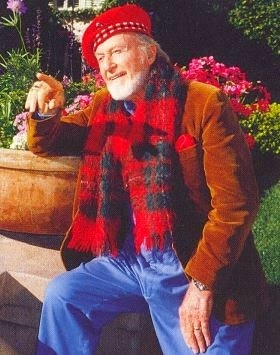 Donald H Parker
Donald H Parker1910-2000The SRA Program was the creation of Donald H Parker, who was a reading teacher in rural America and noticed that his students did not do well when taught from the same reading book all at the same time. Some lagged behind, becoming frustrated when they were pushed to keep up, while the better readers in class experienced frustration from being held back by underachievers and normal readers. In 1950, he invented a system of teaching reading skills on an individual basis while in a communal classroom environment. After receiving his PhD from Columbia University, he approached Chicago-based Science Research Laboratories and pitched them the idea for a program marketed to schools nationwide. If you want to read about his struggle to bring his idea to market a great article has been posted by SRA Reading Labs on its website.
I have to admit, when I was initially evaluated for SRA placement, I was pretty far down the ladder, not quite at the bottom, but uncomfortably (and embarrassingly) close. But tests are not always as revealing, or as accurate, as they are touted to gullible school administrators. To the amazement of all, except myself, I went through those early lessons like a blowtorch through butter. First, the teacher thought I was deluded, that I had convinced myself I was a good reader when I was not, then she was certain that I was somehow cheating, even if she did not know how. Silly teachers! It was not till third grade that I was assigned a teacher with a brain, a sensible lady named Mrs Decker, who not only let me proceed through the SRA Lab for my grade at my own speed (which was fast), but also encouraged me to write my own stories...so, anyone who has a beef with my writing can probably blame Mrs Decker.
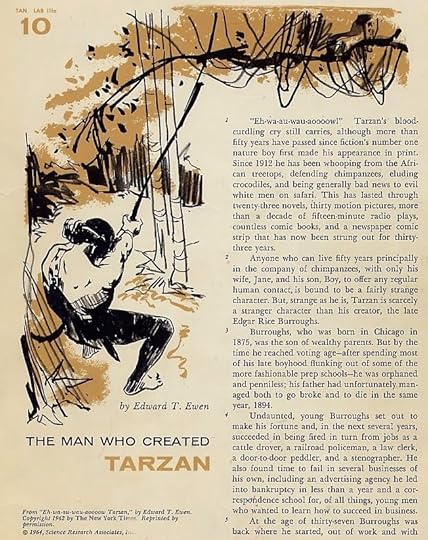 Unfortunately, third grade does not last forever, but I was looking forward to fourth grade for a number of reasons--I would be back in the main building rather than in the original two-room schoolhouse (alas, now demolished), I could look down on third graders (metaphorically, since I was the shortest kid in class), my marble-shooting skills had really improved (yes, I will win all your marbles), and I would be moving on to the upper level SRA Reading Lab (yes!). I had big plans for fourth grade, but the best-laid plans of mice and schoolchildren oft go astray.
Unfortunately, third grade does not last forever, but I was looking forward to fourth grade for a number of reasons--I would be back in the main building rather than in the original two-room schoolhouse (alas, now demolished), I could look down on third graders (metaphorically, since I was the shortest kid in class), my marble-shooting skills had really improved (yes, I will win all your marbles), and I would be moving on to the upper level SRA Reading Lab (yes!). I had big plans for fourth grade, but the best-laid plans of mice and schoolchildren oft go astray.In the summer of that year, my parents moved us ten miles south to Chula Vista, back in the days when a veteran could qualify for a home with $1 down and a mortgage payment a bit less than 25% of one person's income. I was wary of the move. Yes, I would be glad to have my own room, but what about the school? I didn't know what a "Lauderbach" was, but it didn't sound good. Of course, my parents told me everything would be all right, but parents always make baseless statements like that, don't they? A school was a school, they said, and I probably wouldn't even know the difference. "Sigh." On the first day of school, I learned the horrible truth--the school building was of a "modern" design, I didn't know who to look down on since they were all strangers, no one at the new school played marbles, and, worse of all, this school didn't use the SRA Program. When I walked into class, I looked around and asked the teacher (nameless here to protect the guilty) where the SRA Reading Lab was. She didn't know what I was talking about. Silly teacher!
Published on December 18, 2014 11:49
December 4, 2014
Fourth for the Three Dogs
 The fourth book in the Paws & Claws series,
The Death & Life of an American Dog
, is now available. Fourth. Hard to believe, for me at least...
The fourth book in the Paws & Claws series,
The Death & Life of an American Dog
, is now available. Fourth. Hard to believe, for me at least...When I wrote the first book in the series, I did not anticipate writing any other books about the Three Dog Detective Agency. It was a project I had long discussed with Levi, but I had never gotten beyond the general concept, and did not actually undertake until 2012, as part of National Novel Writing Month, the process of which I shared here. Had I known then that I would write more than just the one book, I probably would have given it a different title, probably the subtitle, A Three Dog Mystery instead of Paws & Claws. Since then, I have revised the text, added photos of locations and characters, and created a new cover. But I kept the title, mostly because it always annoyed me when I would buy what I thought was a new book, then find out it was one I had already read, published under a new title.
Speaking of titles, when I decided early in 2013 that I wanted to continue telling the adventures of Levi, Sunny and Yoda, I sat down and charted a course, not through outlines or a series of synopses, but by way of a list of titles. I don't know if other writers use this method of stimulating the little grey cells, but it's one that works for me--the title suggests a situation, which requires the right setting, which suggests the best opening and characters, and...well, once the characters get involved, I just write down what they say and do. Of course, it means I'm at the mercy of my characters, and sometimes they do double-cross me, as Levi did in K-9 Blues , where he was supposed to smell one scent but reported something completely different, forcing a complete rethinking of the plot and climax. Back to titles...my Paws & Claws notebook starts with a list of more than a dozen titles, none with any explanation, and the fourth is The Death and Life of an American Dog.
The title suggested a canine veteran, a war dog, and since I had been in the Army, it made since that the dog had as well. The title also suggested a kind of rebirth, a return to life from a deathlike state. It reminded me of The Light of Day, a 1962 book by Eric Ambler about Arthur Abdel Simpson, who finds himself in a very dark situation and yearns to return to the light of day. It also brought to mind Carlos Fuentes' The Death of Artemio Cruz, also published in 1962, in which a corrupt land owner in post-Revolutionary Mexico must journey back in his mind to find a state of grace.
So, I had a war dog who was in a bad place, a dark place, perhaps a prisoner of his own fears, trapped in a trauma-caused dream. But did the danger stem purely from the depths of his own mind? Obviously not, otherwise Levi, Sunny and Yoda would have to open the Three Dog Psychiatric Agency, and I had no plans to write the canine equivalent of Flowers for Algernon. The story needed villains, and they had to come from the land where it all had to start--Afghanistan.
Of course, the setting is a given--Chula Vista, for that is the home of the Three Dog Detective Agency, almost a character itself. From Afghanistan to Chula Vista, with villains following...the back story begins to form, and it's when a back story is revealed, piece by piece over the course of the plot that all the twists begin to straighten, all the puzzling incidents begin to make sense. As for an opening, there are always two in the Paws & Claws series, the prologue and the story itself, and this book was no different. As I thought about the plight of the war dog and how it all might have started, I heard a voice shouting "Iblis! Iblis!" from the midst of flames. I then realized the Army dog was having a nightmare, and the nightmare became the prologue. As for the start of the story itself, I saw Yoda, the impetuous and usually snarky Pomeranian of the group, on a solitary patrol one day and...well there you are.
I hope I have not bored anyone too much with this account of how The Death & Life of an American Dog came into being (and if I did, why are you still reading?), but I'm always interested in how writers create stories, and thought I would share. Of course, this was just the start of the story, for even fiction requires research. A long time ago, Isaac Asimov wrote, "I don't look to fiction for facts, but I don't look to it for errors either." It's a maxim I've always taken to heart, which is why I extensively research, of which only about 10% actually makes it into any book or story. For this book, I researched dog breeds of Afghanistan and Pakistan, military dog training, how pizza is made, the Veterans Administration, PTSD, Islamic mythology, folklore, Battlestar Galactica, herding calls, storm drains, Victorian architecture, and a host of other subjects.
No matter how the book starts, however, no matter all the various bits and pieces poured into it to create an interesting and moving plot, it's always about one thing--the dogs. I always keep in mind that my main characters are not detectives who are dogs, but dogs who are detectives. A subtle note, perhaps, but one which makes all the difference in the world.

Published on December 04, 2014 10:34
October 2, 2014
Shedding Books...Reluctantly
For everyone who collects, accumulates or hoards books, there eventually comes a point where you have to shed books. No doubt, if you fall into one of those three categories, you have changed residences at least once in your life, meaning you already know what it's like to lose friends and/or family. The last time I moved (which was the last time I moved), my father was one of the people who foolishly volunteered to help. After about the twentieth, maybe it was the twenty-fifth, box of books, he looked at me and said: "If you move again, Chula Vista is going to see its biggest bonfire...ever." Maybe he was just kidding, or maybe his back was hurting and he was feeling a little cranky--well, he is slightly older than I am, or used to be before my last birthday--but I decided not to take a chance, and have not moved since. Of course, losing friends and family is one thing, but losing books is another.
 Arimintha's Complaint
Arimintha's Complaint
Regular readers of this blog (I'm sure there must be a couple) will remember a similar complaint from Arimintha, our favorite playwright and game designer. Her reasons were valid and her solution very much a product of 21st Century technology (Kindle), but she did have to shed some real books, a process repeated very recently when she moved yet again, this time to beautiful and quiet Panorama City. The upside to all her moves is that with each relocation I receive books she previously "borrowed," and some new ones as well. I figure, two or three more changes of address and I might actually get back almost all the "borrowed" books. And, then, there's that whole Man, Myth & Magic set that takes up so much room...hint.
There have been two times in my life in which books have flowed out of my library rather than in, both a long time ago, the first time involuntarily, the second...well, not exactly voluntarily, but I had no other choice. The first time was when I enlisted in the US Army. I stored all my books with my mother (books [bunches], sci-fi & mystery magazines [lots], and comic books [lots more!]) and thought they were safe. Little did I know then, but not long after I boarded the bus for Los Angeles, Chula Vista was the site of an epic yard sale. Yes, painful when I found out, but you can't hold a grudge, not against your mother...well, not for more than two or three years.

The second time was in the 1980s, and was actually more painful than the first because I had to do it myself. I suppose if I had to describe it, it would be, maybe, self-surgery, like hacking off a limb or plucking out an eye, no anesthesia. If you've had to get rid of books, you already know what it's like, so there's no point in rehashing it. How did it happen? Hired away from a book company by firm of naval architects, only to be laid off six months later, and there you go. You think another job is around the corner, then the next corner, and the next, and the next...well, as it turns out, it's just corners, no jobs, and then you're standing on a corner with a tin cup. Nope, didn't do that...too much pride, same as what keeps a person from tying his life to the government dole (once they have you, they don't let go). Times were tough, I didn't have any prospects, but I did have books, lots of them (I restocked after that whole mother-yard-sale thing) and some were collectible.


By the time I finished going through my shelves, I had two paper bags full of books that I could lose without pain...well, not unbearable pain. All I had to do to follow through with my plan was to think of my family. Despite my rampant bibliomania (a "gentle madness" it's called) I really do value my family more. With my two bags of books in arm, I took the bus downtown and made my rounds of the bookstores. My first jaunt to downtown San Diego had been more than twenty years earlier to find several dozen bookstores, from vast emporiums to tiny hole-in-the-wall places sandwiched between sleazy bars and gritty tattoo parlors. This time, however, I found only a handful of survivors of those halcyon days, most being kept afloat, not by the reading public but by the collecting elite. Somewhere along the way, reading had become a lost art, a trivial and foolish waste of time.
Since reading was no longer a recreation of the masses, a few "common" books went back home with me. The others were collectible enough to warrant offers from booksellers, some of them at least. Most sellers were no longer buying because the marketplace was dying, but a few stores justified my long and depressing trip downtown. By the time I finished, I had three checks in my pocket and a half-dozen books I was glad to take home. I cashed the checks at a bank downtown, took the thirty pieces of silver, and waited for the bus home. Of course, things have changed downtown over the ensuing three decades, most notably in number of bookstores. Now, there are none; they have all gone under, though one did go up in smoke. And to make the transformation of downtown complete, the bank where I cashed the checks (showing my library card as a second ID) is now a hotel and most of the bars and tattoo parlors have been replaced by parking lots and empty government-subsidized buildings.
But, as I wrote earlier, if you yourself are a collector, accumulator or hoarder, you already know what this is like, the pain of shedding books, the depression as you look at the small stack of bills in your hand. No matter what you received, it isn't enough, and will be gone far too soon. Personally, I try not to think about how much money I did or didn't receive. Instead, I choose to console myself with the knowledge that two bags of books (minus a half-dozen) bought eight bags of groceries...but I still do miss the books.
 Arimintha's Complaint
Arimintha's ComplaintRegular readers of this blog (I'm sure there must be a couple) will remember a similar complaint from Arimintha, our favorite playwright and game designer. Her reasons were valid and her solution very much a product of 21st Century technology (Kindle), but she did have to shed some real books, a process repeated very recently when she moved yet again, this time to beautiful and quiet Panorama City. The upside to all her moves is that with each relocation I receive books she previously "borrowed," and some new ones as well. I figure, two or three more changes of address and I might actually get back almost all the "borrowed" books. And, then, there's that whole Man, Myth & Magic set that takes up so much room...hint.
There have been two times in my life in which books have flowed out of my library rather than in, both a long time ago, the first time involuntarily, the second...well, not exactly voluntarily, but I had no other choice. The first time was when I enlisted in the US Army. I stored all my books with my mother (books [bunches], sci-fi & mystery magazines [lots], and comic books [lots more!]) and thought they were safe. Little did I know then, but not long after I boarded the bus for Los Angeles, Chula Vista was the site of an epic yard sale. Yes, painful when I found out, but you can't hold a grudge, not against your mother...well, not for more than two or three years.

The second time was in the 1980s, and was actually more painful than the first because I had to do it myself. I suppose if I had to describe it, it would be, maybe, self-surgery, like hacking off a limb or plucking out an eye, no anesthesia. If you've had to get rid of books, you already know what it's like, so there's no point in rehashing it. How did it happen? Hired away from a book company by firm of naval architects, only to be laid off six months later, and there you go. You think another job is around the corner, then the next corner, and the next, and the next...well, as it turns out, it's just corners, no jobs, and then you're standing on a corner with a tin cup. Nope, didn't do that...too much pride, same as what keeps a person from tying his life to the government dole (once they have you, they don't let go). Times were tough, I didn't have any prospects, but I did have books, lots of them (I restocked after that whole mother-yard-sale thing) and some were collectible.


By the time I finished going through my shelves, I had two paper bags full of books that I could lose without pain...well, not unbearable pain. All I had to do to follow through with my plan was to think of my family. Despite my rampant bibliomania (a "gentle madness" it's called) I really do value my family more. With my two bags of books in arm, I took the bus downtown and made my rounds of the bookstores. My first jaunt to downtown San Diego had been more than twenty years earlier to find several dozen bookstores, from vast emporiums to tiny hole-in-the-wall places sandwiched between sleazy bars and gritty tattoo parlors. This time, however, I found only a handful of survivors of those halcyon days, most being kept afloat, not by the reading public but by the collecting elite. Somewhere along the way, reading had become a lost art, a trivial and foolish waste of time.
Since reading was no longer a recreation of the masses, a few "common" books went back home with me. The others were collectible enough to warrant offers from booksellers, some of them at least. Most sellers were no longer buying because the marketplace was dying, but a few stores justified my long and depressing trip downtown. By the time I finished, I had three checks in my pocket and a half-dozen books I was glad to take home. I cashed the checks at a bank downtown, took the thirty pieces of silver, and waited for the bus home. Of course, things have changed downtown over the ensuing three decades, most notably in number of bookstores. Now, there are none; they have all gone under, though one did go up in smoke. And to make the transformation of downtown complete, the bank where I cashed the checks (showing my library card as a second ID) is now a hotel and most of the bars and tattoo parlors have been replaced by parking lots and empty government-subsidized buildings.
But, as I wrote earlier, if you yourself are a collector, accumulator or hoarder, you already know what this is like, the pain of shedding books, the depression as you look at the small stack of bills in your hand. No matter what you received, it isn't enough, and will be gone far too soon. Personally, I try not to think about how much money I did or didn't receive. Instead, I choose to console myself with the knowledge that two bags of books (minus a half-dozen) bought eight bags of groceries...but I still do miss the books.
Published on October 02, 2014 15:14
August 20, 2014
The Afterlife of HP Lovecraft
 H.P. Lovecraft
H.P. Lovecraft(20 August 1890 - 15 March 1937)During his lifetime, fantasy and science fiction writer Howard Phillips Lovecraft often averred that he believed in nothing, in no form of afterlife, neither the Heaven (or Hell) of his Puritan forebears nor the reincarnations of the Eastern religions. At death, he held, there was merely oblivion, a nothingness, a state he thought much more bearable than life, as there were no wants or desires, no pain or anguish. Before our births, he said, there was nothingness, so why make a big fuss about returning to it at the end? But when Lovecraft died of cancer in 1937, was that really the end for him? Perhaps personally, if his beliefs were correct, but not for his name, his stories, or his ideas. It may not be reincarnation in the tradition of our Hindu brethren, but HP Lovecraft continues to touch minds and change lives 115 years after his birth.

More than forty years ago (though sometimes it seems like a thousand), I sat in a high school homeroom class before the start of the actual learning day. It was a time used by my fellow students to do the homework they were supposed to have done the night before or to gossip about who was doing what with whom or to sit sullen-eyed and brood about the unfair vicissitudes of their lives. My homework, however, was completed, as usual, I didn't have any gossipy friends (hardly any friends at all, really), and though I was prone to brooding it was not usually a public activity for me...people just thought me one of the "quiet ones." On this particular day, I was doing what I did every day -- committing to paper stories about people who had never lived in lands that had never existed. As I neared the end of a story about a man foolish enough to venture upon the mist-laden moor alone I felt a dark presence looming over me. My heart froze and my gaze darted frantically to my left. Yes, Mr Vigil, my homeroom teacher, was standing next to me. He asked me what I was doing, I admitted my deed in a barely audible voice, and he asked if he could read it. I have often wondered what my life, or at least my writing life, would have been like if I had bucked authority (as was the fashion in the 60s) and said, "No way, man!" But I didn't, and he did read it, and I sat all sullen-eyed and brooded about the unfair vicissitudes of my life, and interfering teachers; toward the end of class, he handed back "The Moor" and said, surprisingly: "It was really good, and I'd like to read it when it's finished." And then he asked the question: "Have you ever read HP Lovecraft?" As it happened, I had not, but all that was about to change and my writing life take a big left turn.
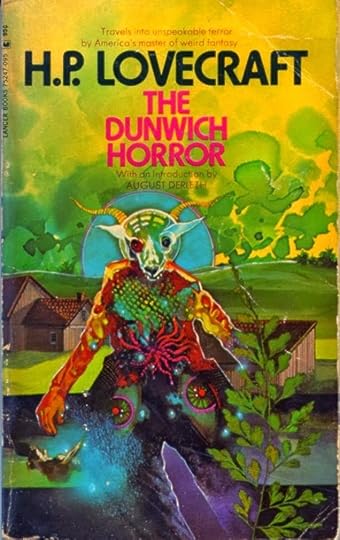


Back in those days, bookstores were everywhere. Even a tiny burg like Chula Vista (pop approx 20K) had two, and that was not counting the two newsstands and the three department stores that had book departments. Downtown San Diego had more than thirty bookstores. But, as it happened, the day after Mr Vigil asked the question, my parents had to go to the Lemon Grove Shopping Center for some reason or another, and I found myself walking the aisles of the late and once great Pickwick Bookstore; one clerk eyed me suspiciously when I asked for Lovecraft (probably thought it was one of Dr David Reuben's books) but a more knowledgeable clerk knew exactly what I needed, and I left with several of the outre-covered editions published by Beagle...money actually being worth something back then, I was able to buy all the titles they had with my yard-work allowance, and get change back. I read them, and was amazed at Lovecraft's cosmic themes and soaring flights of imagination, at his sheer genius in stringing the right words together to invoke myriad moods. And I marveled at his ability to challenge even my vocabulary.
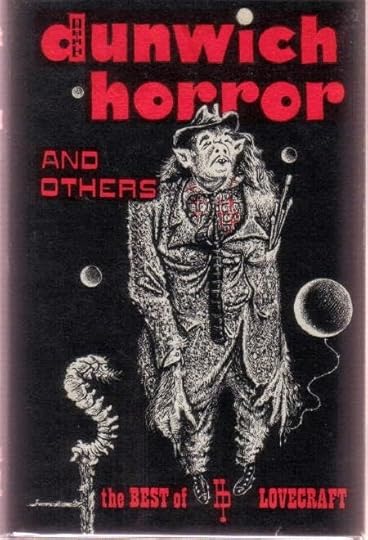
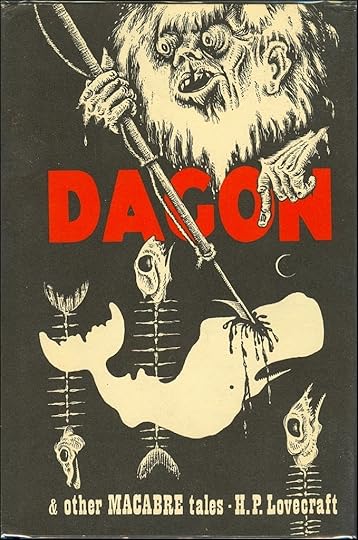
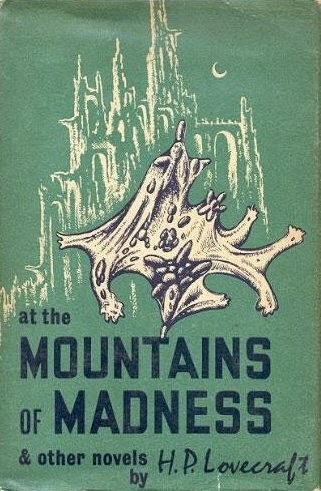
It was not long before I started seeking out other editions of Lovecraft's work. I suppose I could make a rational argument for acquiring the hardcovers published by Arkham House (collector's value, durable editions, and all that) but I think I would be at a loss to explain why I have multiple paperback editions of the same story collections. Thank goodness publishers later edited the stories by theme for I could then quite truthfully (yet truly mendaciously) claim I did not have the book in my library. I cannot even claim I was replacing worn and discarded books, for I still have the paperbacks I bought at Pickwick's and "discard" seems to be the one word never to have made it to my working vocabulary.
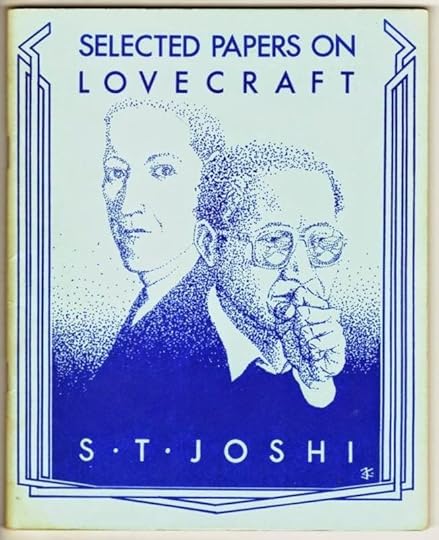
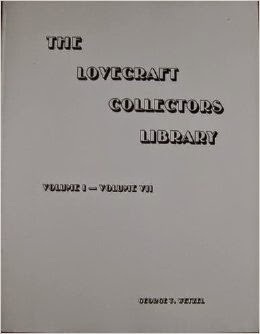
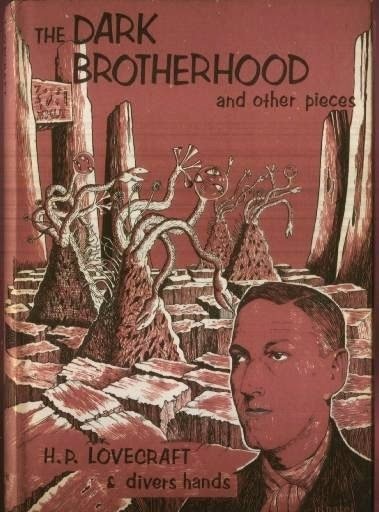


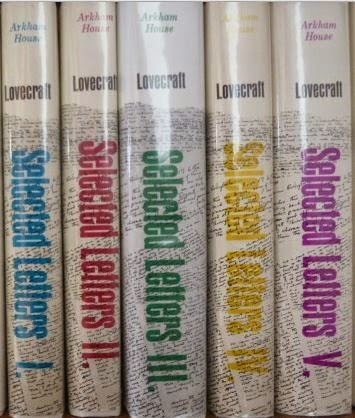
Of course, if you get collecting Lovecraft, you don't just stop with his writings. You also collect things written about him and even stories that other people wrote based upon his writings. Eventually, if you become a full-fledged citizen of Lovecraft-land, you also start writing about him and write stories based on his ideas, and there was no time better for that activity than the pre-millennium decades, when print fanzines, chapbooks and booklets were rife, and the small press was a cottage industry engaged in by thousands of people, dozens of whom became my correspondents and sometimes my collaborators in fiction.
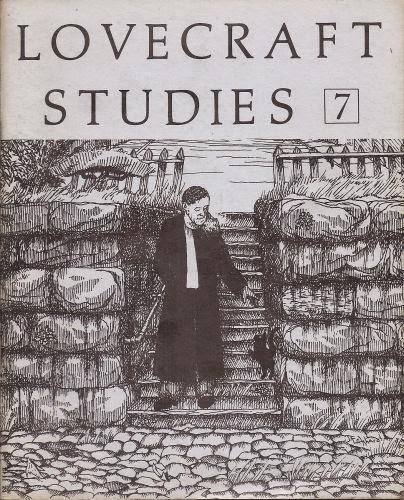 Lovecraft Studies 7
Lovecraft Studies 7"The Old Man & the Sea"
by Ralph E Vaughan
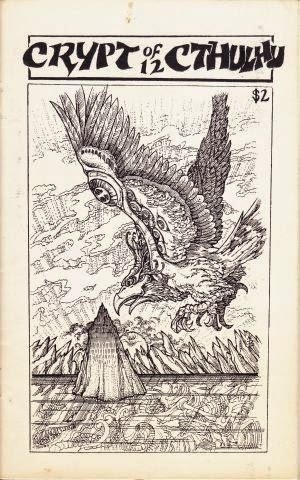 Crypt of Cthulhu 1992
Crypt of Cthulhu 1992Cover by Nick Petrosino
"Lovecraft & Antarctica"
by Ralph E Vaughan
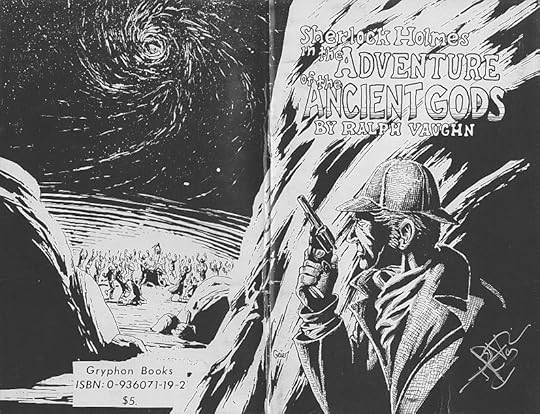 "The Adventure of the Ancient Gods" by Ralph E Vaughan
"The Adventure of the Ancient Gods" by Ralph E VaughanFirst story ever published with Sherlock Holmes & HP Lovecraft
 H.P. Lovecraft in the Comics
H.P. Lovecraft in the Comicsby Ralph E Vaughan
A complete survey of comic book adaptations,
one of the rarest of Lovecraft-related books.
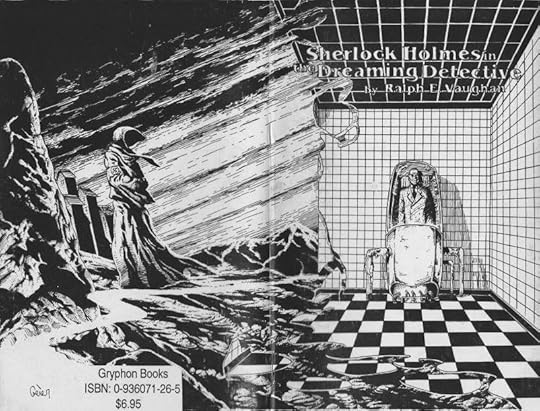 "The Quest for the Dreaming Detective" by Ralph E Vaughan
"The Quest for the Dreaming Detective" by Ralph E VaughanFirst story of Sherlock Holmes in HPL's Dreamlands
Even in the stories and books I've written that do not overtly evoke the shade of Lovecraft and his ideas, he always seems to be in the back of my mind, pointing out shadows even when more than one sun illumines the land, reminding me that even the most bucolic landscape is but a thin veneer over ancient secrets, that the reality we see is but a pale manifestation of the of the reality hidden from our severely limited senses.

I've thought of writing this little homage to HP Lovecraft for quite awhile, and I've hinted of my debt to him in other posts, but the time never seemed quite right. But it is today, the 115th anniversary of his birth. He lived less than 47 years, and if his beliefs were correct he entered oblivion on 15 March 1937, but, at the same time, the most important aspects of his life survived the demise of his mortal shell, perpetuated by the work of every writer, artist, filmmaker and reader whose life he touched, and, to a writer, that may be the best kind of afterlife for which to hope.
Published on August 20, 2014 12:19



